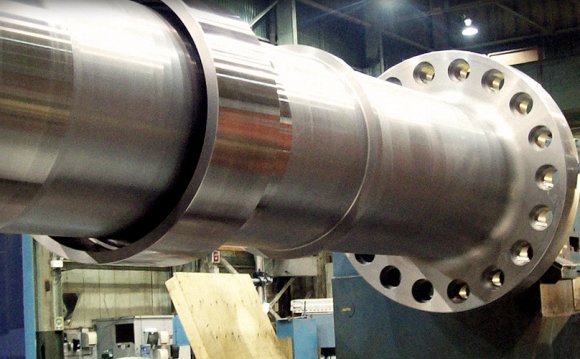
 The Nenskra dam is the most advanced of Georgia's massive plans for hydropower installations in the Upper Svaneti region. It will deprive the local community of ethnic Svans of lands and livelihoods, but potential negative impacts have not been properly assessed.
The Nenskra dam is the most advanced of Georgia's massive plans for hydropower installations in the Upper Svaneti region. It will deprive the local community of ethnic Svans of lands and livelihoods, but potential negative impacts have not been properly assessed.
Browse updates
Key facts
The Nenskra project foresees damming the Nenskra river 10 kilometers upstream from the village of Chuberi. To increase the reservoir’s volume, a 14 km long tunnel will divert water from the Nakra river on the other side of the mountain close to the village of Nakra.
Cost: USD 1 billion (doubled since initial estimates)
Size: 280 MW power plant, 135 m high dam and a storage reservoir
Public financing: The International Finance Corporation (IFC) has provided public-private partnership advisory services. As of spring 2016, the European Bank for Reconstruction and Development, the Asian Development Bank, the European Investment Bank and the Korea Eximbank consider financing the dam.Project promoters: Korea Water Resources Corporation & JSC Partnership Fund (a Georgian government agency)
Contract type: Public-private partnership: BOT (Build, Operate, Transfer)
 Contractor: Salini Impregilo (IT) (preparatory works began in September 2015)
Contractor: Salini Impregilo (IT) (preparatory works began in September 2015)
Customer: Like many other newly built hydropower plants in Georgia, Nenskra will produce winter season electricity for the domestic market and export the rest to energy-hungry Turkey.
Highlights
- 34 new hydropower plants are planned in Upper Svanetia, an area roughly half the size of Cyprus.
- The Nenskra reservoir will deprive locals of the pastures and forests they use to earn their income.
- The project's Environmental and Social Impact Assessment did not properly assess socio-economic impacts on local communities nor the geological hazards.
Hydro congestion in Svaneti
In the last decade, Georgia has rushed to exploit its hydropower resources to become a regional energy player. But weak laws and lack of strategy have made the sector a breeding ground for environmental damage, social problems and political cronyism.
The Upper Svaneti region in north-western Georgia provides a microcosm of these broader trends.
Plans for development of 35 new plants are under way in an area roughly the size of Mallorca that is largely covered by a planned national park, hosts UNESCO listed medieval monuments and is inhabited by the traditional community of Svans.
The impact of such intensive hydropower plant constructions on the rivers and biodiversity in Upper Svaneti has not been assessed.
Of all the projects, Nenskra is the most advanced.
> Read more:
Hydropower development in Georgia - Projects, risks, legal context
 Local population & land use issues
Local population & land use issues
Mother and daughter during mass in Chuberi.
300 families live in Chuberi and 80 families in the village of Nakra. The majority are Svan, an ethnic subgroup of Georgia’s Caucasus mountains with their own language, laws and traditions. For generations, they have lived in isolation and self-dependence in Upper Svaneti. Their livelihoods depend on forestry, grazing and subsistence agriculture.
Photo story
The community of Chuberi will lose part of its land should the Nenskra dam be built.
The reservoir will flood communal lands and would reduce families incomes, contributing to poverty and marginalisation, especially for women who are less likely to receive job opporunities during the construction.
At least two families live in fear of being resettled.
Even though the use of land is a highly contested issue, the agreement over the project, which may contain relevant information, has not been made public.
Parallels to the Khudoni dam downstream
The people of Chuberi know the experience of the Svan communities living downstream in Khaishi where the 702 MW Khudoni dam is planned to be built. The Georgian state sold their ancestral lands for next to nothing to the Khudoni dam promoter. The lands and the dam remains a subject of fierce protests to date.
> Read more:
Khudoni hydropower plant, Georgia - Project background, images, more
Poor impact assessments, lack of participation
[From a] nature preservation point of view, not all of these larger [rivers] like Enguri and smaller rivers like Nenskra and Nakra should be used for hydropower generation.
Prof. Dr. Frank Schrader, International Consultant on Hydropower, in his review of the Nenskra ESIA
From the onset, the project has been poorly communicated to the affected communities who have few opportunities to be heard. People’s knowledge about the dam is scarce and the information provided by the developers focuses on benefits while neglecting negative impacts.
A review (pdf) of the Nenskra Environmental and Social Impact Assessment (ESIA) prepared by a German consultant indicates that the ESIA report fails to sufficiently define the area of influence, suggest project alternatives, assess the impacts on the local communities and the, and evaluate the costs and benefits of the project for the Georgian society.
The Georgian Ministry of Environment approved the project even though the review questioned the project from a nature conservation perspective.
> Read more:
Briefing on the Nenskra hydropower plant (pdf)
Briefing | February 2, 2016
(pdf)
Comments | June 25, 2015
Cumulative impacts
Nenskra is one of several dams planned in the Enguri river basin, upstream of the state-owned 1300 MW Enguri hydropower plant. The water accumulation at Nenskra will inevitably reduce water levels downstream, and lessen the economic utility of the Enguri dam and the planned Khudoni dam.









